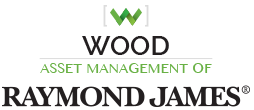
Keeping you informed with
commentary and resources
Economic Monitor – Weekly Commentary
by Eugenio Alemán
Giving some context to real estate concerns
August 9, 2024
When the Federal Reserve (Fed) cut rates in response to the COVID-19 pandemic, mortgage rates fell below 3% in 2021 and many households refinanced or obtained new loans. Today, ~40% of homeowners own their home outright while 60% of those with a mortgage have rates below 4%, insulating a large part of the population from increasing borrowing costs due to the Fed hiking rates over the last two years. However, financing for commercial real estate (CRE) is different than that of residential housing. Traditionally, households borrow using 30-year fixed mortgages, while commercial real estate loans are often shorter in duration and reset upon maturity. The estimate for the upcoming ‘wall of maturities’ for U.S. commercial real estate can be seen below, and it is making lots of noise because many CRE properties have lost value due to lower demand and the sharp rise in interest rates. While we agree that the commercial real estate environment can be compared to a slow-moving train wreck, it is also important to consider other factors beyond the incoming maturity wall.
The Commercial Real Estate Market by Sector
When the media discusses commercial real estate, saying it is in trouble and heading for an inevitable crisis, most investors immediately think of office space, and how post-pandemic, many workers have not returned to work full-time or are now working fully remotely, leaving landlords of these ‘empty’ commercial buildings in trouble. However, the office sector of CRE makes up only ~16% of the overall index, with the rest consisting of sectors like multifamily, retail, health care, industrials, and others.
Many of these industries are thriving, and present little concern to the broader CRE market. For example, hotel occupancy levels are near their pre-pandemic levels, while retail properties are experiencing only ~4% vacancies according to the National Association of Realtors one of the lowest among all commercial sectors. Fiscal packages like the CHIPS Act, the Inflation Reduction Act, and the Infrastructure Bill support the industrial CRE sector, while an ever-aging US population continues to support health care CRE. Lastly, multifamily properties should be monitored as vacancies are climbing higher, and as the supply of new housing increases, the vacancy rates could increase further. However, specialized CRE like data storage and warehouses are in very high demand due to the AI craze, likely offsetting weaker demand in some of the other sectors. It is also important to note that the issues faced by the CRE market are known and regulators, as was the case during the Great Recession, have been working with lenders and borrowers to minimize any potential disruptions to these markets.
Who owns the CRE debt?
Roughly 70% of CRE debt is owned by small regional banks and community banks, which are considered at a higher risk compared to their large bank counterparts. We’ve established in the past that these regional banks present little risk to the broad equity market as their combined market weight is less than 0.5% of the entire index, but what about economic risks? Historically, when CRE loans have matured, borrowers have just refinanced and moved on because interest rates have been on a steady decline for decades. However, with interest rates having doubled over the last few years, borrowers are unlikely to be willing to refinance and may be unable to pay off the loan. This situation leaves banks with two possibilities. First, to foreclose on the property and take on the burden of managing the building, but with high costs and limited resources, we believe this scenario is less desirable. Second, the lender may prefer to negotiate with the borrower to restructure the loan until better times (and lower rates) come around. Therefore, as regional and community banks are often deeply embedded in local communities, we believe that CRE defaults will likely be limited as many will attempt to renegotiate loans instead of taking the underlying asset.
Lastly, according to research from Cohen & Steers, not all office buildings have the same experience—newer construction benefits from strong demand compared to older buildings, while 60% of total vacancies can be attributed to 10% of mostly older buildings.1 Therefore, office space demand is not broadly weakening, rather tenant preferences have shifted.
Bottom line:
Interest rates are just one of the many factors affecting the economy and the CRE market. For example, employment drives demand for all sorts of CRE, and while we continue to believe that the labor market is slowing, we don’t expect it to experience any job losses. On the other hand, if we are wrong and the labor market turns negative, the Fed will likely cut rates quickly, which will be supportive of CRE. Our view remains that the Fed will likely cut rates by at least 50bps this year, with several more cuts in 2025, which will certainly provide both borrowers in the CRE markets and lenders some relief going forward. Additionally, as discussed above, office space is only ~16% of the overall CRE market, and regional bank exposure to CRE loans as a percentage of total loans is less than 20%. This analysis was not done to disregard risks in the CRE market but to illustrate that the situation may not be as bad as feared.
Economic and market conditions are subject to change.
Opinions are those of Investment Strategy and not necessarily those Raymond James and are subject to change without notice the information has been obtained from sources considered to be reliable, but we do not guarantee that the foregoing material is accurate or complete. There is no assurance any of the trends mentioned will continue or forecasts will occur last performance may not be indicative of future results.
Consumer Price Index is a measure of inflation compiled by the U.S. Bureau of Labor Studies. Currencies investing are generally considered speculative because of the significant potential for investment loss. Their markets are likely to be volatile and there may be sharp price fluctuations even during periods when prices overall are rising.
The National Federation of Independent Business (NFIB) Small Business Optimism Index is a composite of ten seasonally adjusted components. It provides a indication of the health of small businesses in the U.S., which account of roughly 50% of the nation's private workforce.
The producer price index is a price index that measures the average changes in prices received by domestic producers for their output. Its importance is being undermined by the steady decline in manufactured goods as a share of spending.
Links are being provided for information purposes only. Raymond James is not affiliated with and does not endorse, authorize or sponsor any of the listed websites or their respective sponsors. Raymond James is not responsible for the content of any website or the collection or use of information regarding any website's users and/or members.







